Welcome to our new look site!
Double Decker
A very unusual fungus
Eddy Kensbock
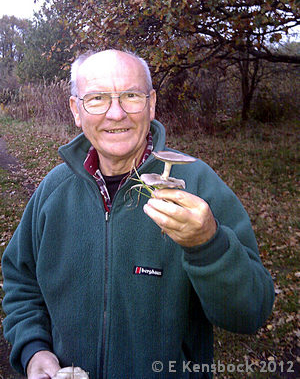 |
Late in the Autumn last year (2011) this photo of a double decker Wood Blewit, Lepista nuda, was taken in Lindow Common, Wilmslow, Cheshire, by a very surprised and happy member of the Dorset Fungus Group. The Wood Blewits were growing on this heathland and deciduous tree forest in abundance and some ended up on the dinner table as they are excellent edibles. The double decker escaped the cooking pot and was imported into the Dorset Fungus Group catchment area the next day and admired as a very unique and rare example of a mushroom growing on a mushroom at the last DFG Foray of the year 2011 at Sherford Bridge, Wareham. |
||
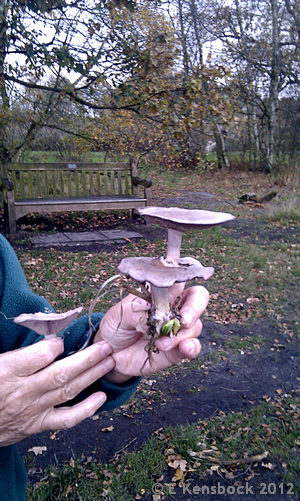 |
To prove that this was not a wind- up and the result of some superglue trick the decision was taken to cut the wonder mushroom and, voila, a perfect “graft” of one mushroom on a perfect host.
The photos were shown to one of the leading mushroom authorities in Great Britain, Michael Jordon, the editor of The Forayer, the official publication of The Association of British Fungus Groups.Michael’s comments: “He has seen this before but never such a good double decker” and he would publish the photo in the ABFG – The Forayer.
Mushrooms growing on mushrooms are well known and some parasitic fungi species such as the Powdery Piggyback, Asterophora rycoperdoides, and the Silky Piggyback, Asterophora parasitica grow mainly on old Russula and Lactarius.
|
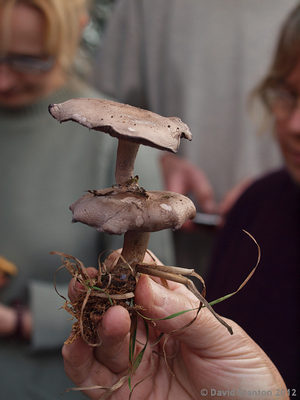 |
|
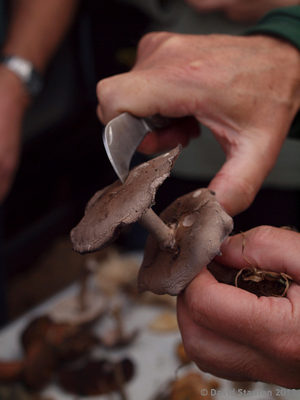 |
Parasitic Bolete, Pseudoboletus parasiticus growing on common Earthball Scleroderma citrinum, believe it or not, the Bolete is actually edible! There are two specimens of Cordyceps that also grow on mushrooms. The Wood Blewit double decker, Piggyback or any other description you can think of looks to me as a perfect and extremely rare symbiosis of the Fungi Kingdom and I am sure we will find other examples of this most improbable phenomenon.
|
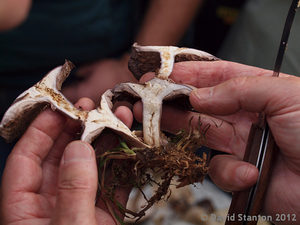 |
